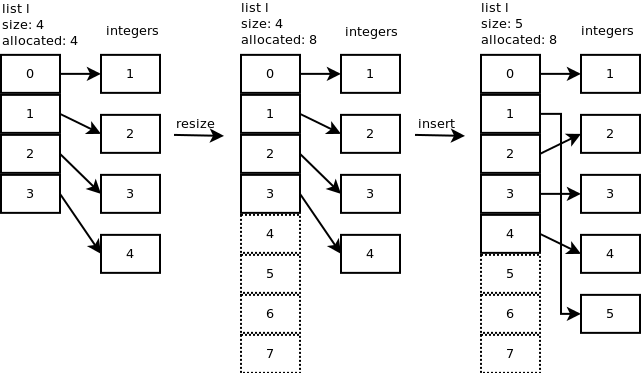I registered and passed AI-100 and DP-100 last week. I registered on last Monday and passed the AI-100 on 29-July-2020 and DP-100 on 30-July-2020 ✌. So, I registered, reviewed materials, and took the exam and passed it in 3 days. It is amazing!!! Hehehe, that maybe just my clickbait. Let's celebrate it first, no matter what!!!
Figure 1: My Microsoft certifications from the Microsoft Certification Dashboard portal.
Let me tell you what the amazing things were about the exam. I did not know what to expect before the exam happened. I used to the exam format such as going to the hall, and write on the papers. Interestingly, I was taking the last exams 7-8 years ago. You registered the exams online, did the exams on a computer software of PEARSON VUE. Because of the COVID-19 situation, I could register the DP-100 exam at a test center in the city center, which is near my place, and I could only register the AI-100 exam at a quite far-away region. I found taking the exam in the far-away test center is more interesting because their measures for COVID-19 is less stringent. I must wear a mask, and further I need to wear a pair of gloves in the test center in city area. I think a pair of gloves is redundant and reducing their profits during the pandemic 😀. You can wash your hands of viruses with soap, and all your viruses would be washed away, and the situation in Singapore is not that bad. By the way, their gloves were very nice 🧤!!! If you are know how to use a computer software, then you don't need to wary about the test software. After you clicked the button "Finished", your scores would come out immediately 😀. I never have experienced a kind of tests like that, from admitting to university, tests in schools..., and I need to wait at least a few days or months to know whether I pass or fail. This is very amusing to me.
That is how I passed AI-100 Designing and Implementing an Azure AI Solution with the score of 717, and DP-100 Designing and Implementing a Data Science Solution on Azure with the score of 816. By the way, you need at least 700 the pass the certification.
Now coming to the main story...
Reviewing for two exams
Before the exam, I don't know how to review for the exams, because I never takes any cloud platform or technology exams. I did some searches online and read around some documents in Microsoft Learn websites. Microsoft did a good job to build the learning resources for their technologies and also for preparing for the certification exams. My company also hires an instructor to teach us the two modules, and he also gave an sample exam paper. But I found this exam paper is not really relevant, and their answers are controversial.
Let's stick with Microsoft (MS) resources for training yourself and preparing for the exam. If your company has an instructor for you, that is great! Learning with interactions would be easier than learning on your owns. First, I would remind you that MS has a portal of anything can be certified, from there, you can navigate into your wanted certification and its learning resources.
DP-100:
The learning path is here. There is a github repo accompanying with the Online-Free course: https://github.com/MicrosoftLearning/DP100. The first module focuses on developing machine learning pipelines with Azure Machine Learning designer with no codes. The second modules teaches what and how to use Azure Machine Learning SDK (Python) to design machine learning pipelines. If a instructor were to teach you, he also cover the contents similar two modules and the github pipeline.
Figure 2: Learning path for DP-100 including two modules.
Let's look at what it is covered in the second module learning Azure Machine Learning SDK:
- Introduction to Azure Machine Learning
- Train a machine learning model with Azure Machine Learning
- Working with Data in Azure Machine Learning
- Working with Compute Contexts in Azure Machine Learning
- Orchestrating machine learning with pipelines
- Deploying machine learning models with Azure Machine Learning
- Deploy batch inference pipelines with Azure Machine Learning
- Tune hyperparameters with Azure Machine Learning
- Automate machine learning model selection with Azure Machine Learning
- Explain machine learning models with Azure Machine Learning
- Monitor models with Azure Machine Learning
- Monitor data drift with Azure Machine Learning
Practice! Practice! Practice! You can register a new Azure account with an email account with some free credits (I remembered around 300$). With that amount, you can practice your skills. When practicing, let focus on setting up an Azure Machine Learning workspace, running experiments and training models, optimizing and managing models, deploying and consuming models. They are as usual as we are doing in jobs as data scientists.
AI-100:
For AI-100, we can follow the same study guides as DP-100. Remembering MS is a nice guy 😆, wants to validate your skills only, and practice makes it perfect.
Figure 3: Learning path for AI-100 including four modules
I found the following github very helpful for reviewing materials after practicing: https://github.com/meet-bhagdev/ai-100
To summarize, we should follow the learning path recommended by MS and practice the lab sessions provided by MS.
P/S: This post is dedicated to my fellow HannLam Woo.
🐘🐘🐘






